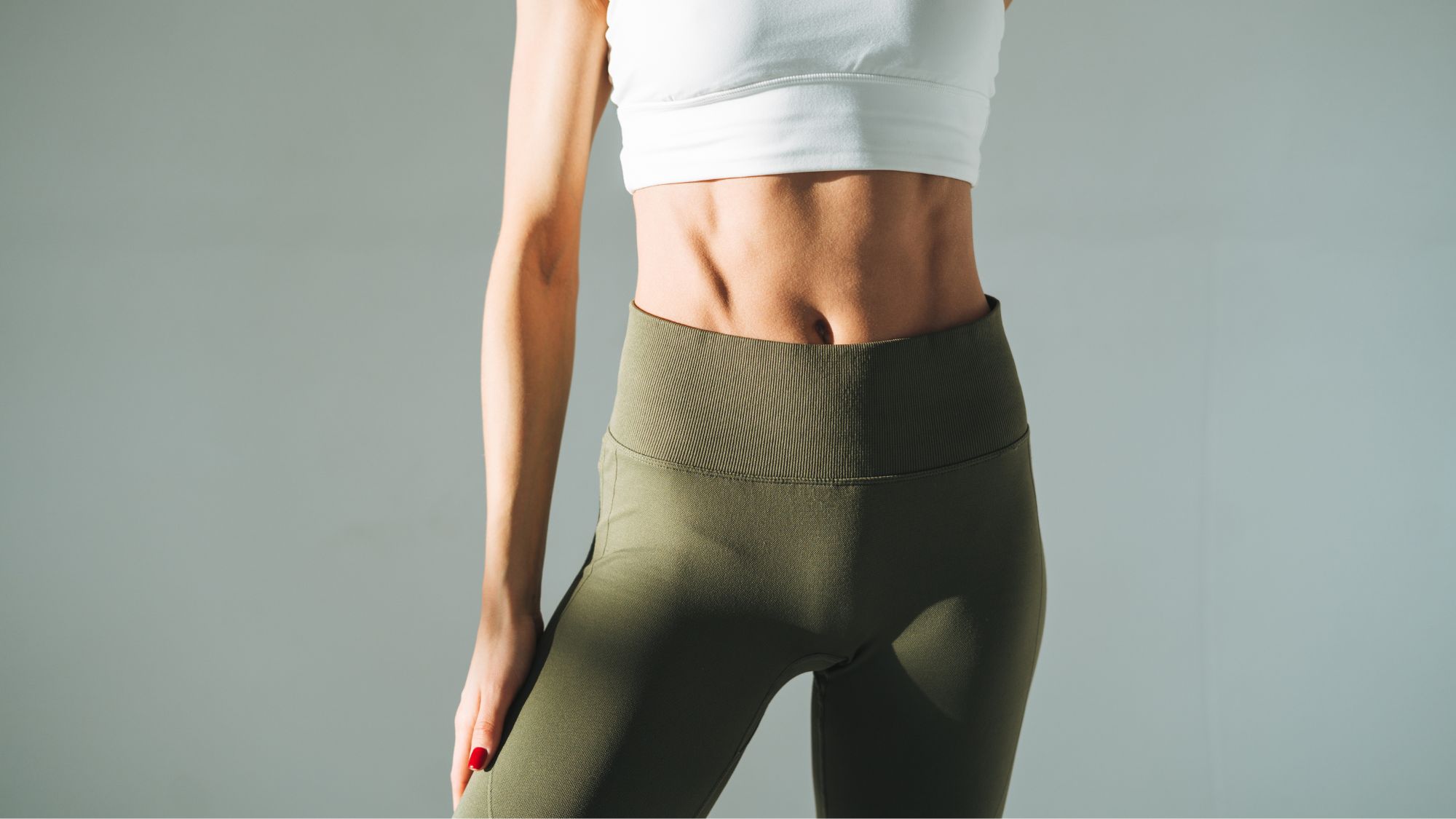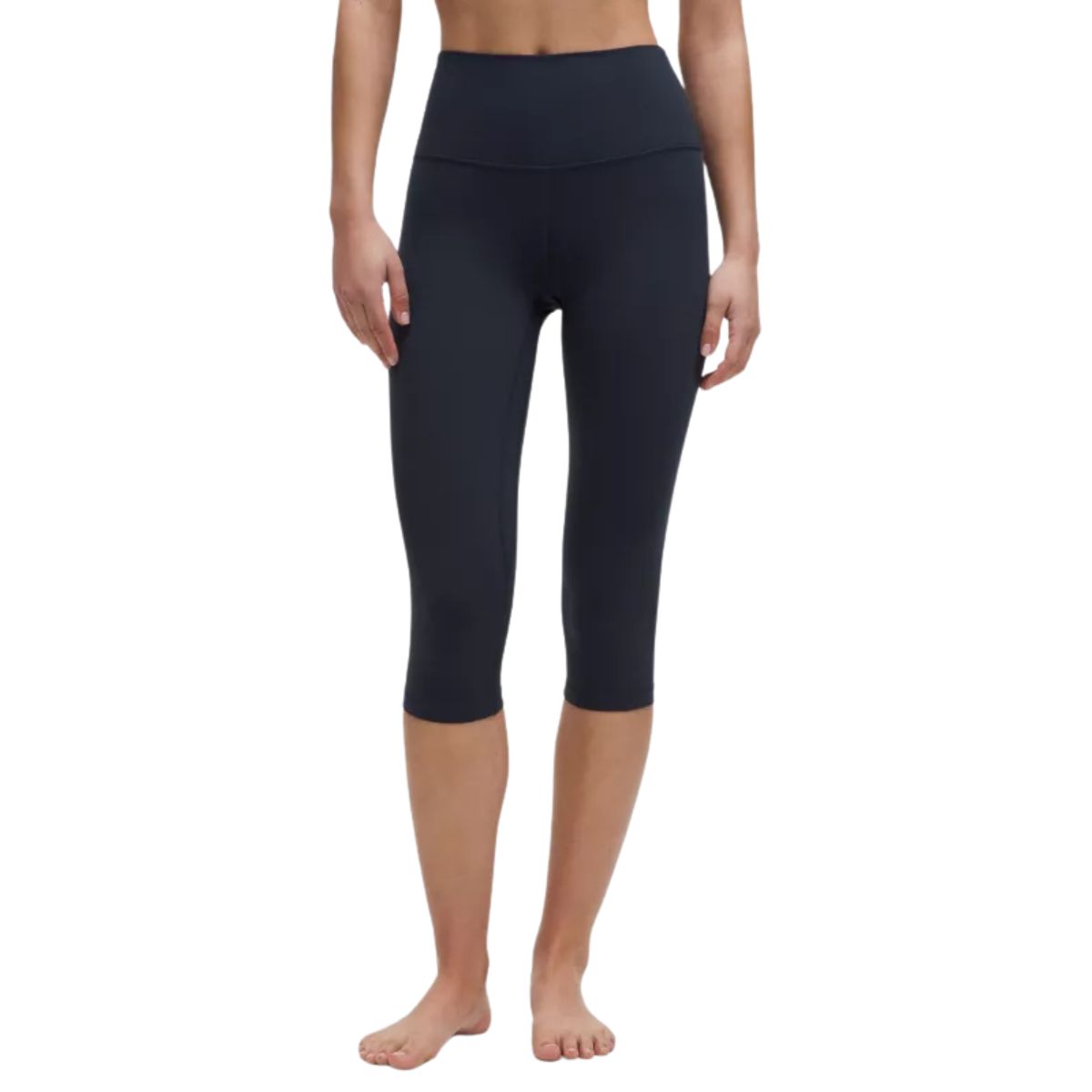Forget The Reps - 6 Static Core Exercises That Are Best For Firing Up Your Deep Abdominals
Just hold still and feel the burn.


98, 99, 100…you mutter through pursed lips, before collapsing flat on your back on the gym floor. Your core crunched to oblivion, your hip flexors probably firing on all cylinders and your neck a little sore, you’ll be back again tomorrow for one hundred more.
If that’s ever been you, you’re not alone. Less than a decade ago, many mainstream core workouts focused almost exclusively on crunch-style moves designed to target the rectus abdominis (also known as your six-pack muscles).
But in recent years, there’s been increased interest in moving beyond this top layer of abdominals, with searches for “deep core workouts” rising by over 5000% in the last twelve months. And with that, static core exercises (think planks, wall sits, and hollow body holds) are having quite the moment.
With studies showing that they improve posture and reduce injury risk, static core exercises were even found by one 2019 study to outperform dynamic movements when it comes to improving balance, which is key for any activity that takes us outside of our centre of gravity, like running, jumping, ducking or even just leaning.
“It’s a reflection of the broader growth of smarter, more functional training approaches,” says Sam Stone, Master Trainer at Barry’s, when I ask her why we’re seeing such a sudden interest in working our deep core muscles, and in static core exercises in particular. “As people become more educated on how the body works, they’re realising that a strong core is about far more than aesthetics - it’s fundamental to overall performance, posture, and injury prevention.”
Stone is right, of course: your core is at the very heart of functional fitness, a training method underpinned by movements that we use in everyday life, such as pushing, pulling, bending, reaching and twisting. To perform these movements well, we require stability, control, coordination and proprioception, all of which require our entire core, not just our abs, to be strengthened.
“When we talk about the deep core, we’re referring to the foundational muscles closest to the spine, primarily the transverse abdominis, pelvic floor, multifidus and diaphragm,” says Personal Trainer, Aimee Victoria Long. “These muscles don’t just generate movement; they create stability from the inside out, playing a central role in spinal alignment and overall core integrity.”
Celebrity news, beauty, fashion advice, and fascinating features, delivered straight to your inbox!
So, what does this mean for how we train? Well, whilst we shouldn’t neglect dynamic core exercises, as these are important for coordination and limb control, if we’re to build deep core stability, it’s the stiller practices we need to pay attention to.
With this in mind, we went in search of the very best static core exercises to stabilise and work our very deepest abdominals, turning to top coaches for their favourites. Looking to add more variation to your core routine? Head to our expert-led guides to the best standing ab workouts, deep core activations and advanced Pilates core exercises. And to read up further on the importance of a strong core, check out our guide to the benefits of a strong core, which genuinely apply to your daily life.
6 Best Static Core Exercises, According To Top Coaches
What is a static core exercise?
“A static core exercise is an isometric exercise, which involves holding a specific position or posture to engage and strengthen the core muscles without movement,” says Nuno Campos, Former Dance Teacher and Head of Fitness at Repose Space, who explains that “by contracting the muscle without changing its length or joint angle, we generate tension and focus on stabilising the spine and pelvis.”
“It’s an incredibly functional way of working your core,” adds Yvette McGaffin, CEO and Co-Founder of Reform RX. “It mimics how we use our core in daily life - holding posture, stabilising while walking or lifting, or even just standing tall.”
What are the benefits of static core exercises?
When it comes to the benefits of static exercises, there are plenty to choose from.
“Static exercises train endurance in the core muscles, which helps with posture, balance, and injury prevention, especially in the lower back,” says McGaffin. “At the same time, you’re training the mind-muscle connection by asking your body to remain engaged in one position for an extended period.”
”They’re also low impact,” she adds, “which means they are gentle on the joints whilst still being incredibly challenging.”
Stone agrees, reminding us that it’s really the functionality of these exercises which makes them so effective. “By developing endurance in the core muscles, we can better support our spine and improve body alignment, which forms the foundation of so much of our other training and daily life.”
So far, so convinced. But how do static exercises compare to high-rep dynamic exercises?
“Static exercises like planks, dead bugs and Pallof presses engage the deep stabilising muscles more effectively than high-rep crunches, which tend to overemphasise superficial muscles like the rectus abdominis,” says Long. “Crunches can increase intra-abdominal pressure and strain the neck and lower back if not done correctly, whereas deep core-focused work encourages better posture, breath control and neuromuscular connection.”
Who are static core exercises best for?
The experts are unanimous in their view that static core exercises are a great practice for most of us, though of course, if you experience any pain when performing any of the movements, you should stop and consult a physio, coach or doctor.
“What’s great about static core exercises is that they can be modified to suit various fitness levels, making them accessible to a wide range of people,” says Campos, who recommends them to anyone “looking to maintain or improve core strength, stability, and posture.”
Stone concurs, adding that static core training is particularly beneficial for runners looking to improve their mechanics or those looking to improve their weightlifting technique. “Static exercises support better movement quality and body awareness, which is why they work well for those taking part in other training, as they make your overall programme more effective.”
McGaffin agrees with her fellow experts, reminding us that static exercises are also perfect for those coming back from injury, or who are post-partum, because of the low level of impact involved. “For anyone not able to do high-impact moves or who needs to build foundational strength before progressing, static core work is able to meet you where you are,” she explains.
Are static core exercises doable from home?
By virtue of the lack of equipment and space required, static core exercises are a great at-home option.
“The key to long-lasting improvements in core strength and stability is consistency,” says Campos, a point which Stone echoes, advising three to four sessions of static core work per week, either as a standalone workout or integrated into another session.
The sessions don’t have to be long either, adds McGaffin. “Even ten to fifteen minutes can make a huge difference in posture, back health, and overall strength, providing that the moves are performed with consistency and intention.”
How do I structure these exercises into a full workout?
The variety and simplicity of static core exercises make them easy to integrate into a wider workout. “You can use them in your warm-up, to activate and ‘wake up’ the core before lifting or cardio,” says Stone, “or add an exercise between sets, as a low-intensity active recovery that keeps you engaged without elevating your heart rate too much.”
McGaffin agrees, adding that “you can even use your static core exercises as a burnout finisher to challenge endurance.”
With the option of repeating the same static exercise over multiple sets, or stringing together a variety of different core holds throughout the session, we asked our experts to pick out their favourites for you to use in your training.
The 6 best static core exercises, as chosen by a PT
1. Straight Arm Plank
What? “Start in a push-up position with the body forming a straight line from head to heels,” says Campos. “Think of connecting the body by engaging the abdominal wall, visualising the crown of the head reaching in opposition to the heels, which will help to engage the body as one long line.”
Why? “The plank is an entire core strengthener, working the abdominals, back and shoulders simultaneously,” explains Campos.
How long? Aim for 3 x sets of 30 to 60 second holds.
2. Side Plank
What? Campos shares: “Position the body on one forearm, resting one foot on top of the other and thinking about keeping your body in one straight line.”
Why? The side plank targets the obliques and improves lateral stability, important for any movements which require side bending or rotation.
How long? 30 to 45 seconds per set, with 3 x sets on either side.
3. Dead bug hold
What? “Lie on your back, with your arms straight up and knees bent at 90°,” says McGaffin. “Press your lower back into the mat and brace your core.”
Why? “Dead bug holds are great for beginners and those in postnatal recovery,” says McGaffin, “because they challenge core control without straining the neck or back.”
How long? Hold for 30 seconds, then rest. Repeat for 2 to 3 sets.
4. Hollow hold
What? “Lie on your back, with your shoulders and legs lifted off the floor,” says Stone, “making sure you keep your lower back pressed into the mat. Beginners can bend knees or keep arms by the side, while the advanced version involves fully extending your arms and legs.”
Why? “The hollow hold mimics the core engagement used in gymnastics, lifting, and running,” says Stone, which makes it a highly transferable and functional method of building strength.
How long? Start with ten to 20 seconds, and build up to 30 to 45 second holds as you improve.
5. Glute Bridge Hold
What? “Lie on your back with your knees bent and your feet hip-width apart,” explains McGaffin. “Lift your hips up, making sure to engage your glutes and your core, and then hold at the top of the movement.”
Why? For McGaffin, the glute bridge hold is so effective because it “strengthens both the glutes and lower back, whilst also firing up the entire posterior chain and stabilising the pelvis.”
How long? Hold for 30 to 45 seconds. Rest and repeat for two to three sets.
6. Bear Hold
What? “Begin on all fours,” says Stone. “Then lift knees just a few inches off the ground, while keeping your back flat and core tight. Hold here.”
Why? “This movement activates the transverse abdominis, the deepest of the flat abdominal muscles, which support your spine and pelvis. The move also strengthens shoulders and helps to improve coordination.”
How long? Stone recommends beginning with 20 to 30 holds, progressing to 45 to 60 seconds as the ultimate goal.
Shop MC-UK approved workout kit now:
Should I also be doing static core stretches?
Yes, absolutely, is the short answer. Stretching your muscles after any workout is crucial for recovery and injury prevention.
“Unlike in your warmup, where dynamic movements are key, static stretching post-exercise helps to reduce muscle tension, improve flexibility and support recovery by elongating the muscles you’ve just worked,” says personal trainer Aimee Victoria Long. Some of her favourite static moves for stretching out your core include a cobra stretch, child's pose, and seated spinal twist.
"The cobra stretch opens up the rectus abdominis (a.k.a your six-pack muscles) and relieves tightness created by movements such as planks," says Long. "To perform the stretch, lie on your stomach, place your hands under your shoulders, and gently press up, lifting your chest while keeping your hips grounded."
A child's pose is a movement we often see in yoga, and its purpose it's to gently stretch the lower back, helping to decompress the spine after core work. "First, kneel on the floor, then sit back on your heels, and reach your arms forward as you lower your chest to the ground," she goes on.
Finally, the seated spinal twist releases any tension being held in the obliques, whilst also helping to improve spinal mobility. "To practice this stretch, sit with legs extended, before bending one knee over the opposite leg, twisting your body towards the bent knee," concludes Long.

A former heptathlete, Ashleigh is a freelance journalist, specialising in women’s health, wellbeing and lifestyle, with words in Stylist, Cosmopolitan, Glamour and Marie Claire. She’s also the Co-Founder of Sunnie Runners, an inclusive London based run club.







